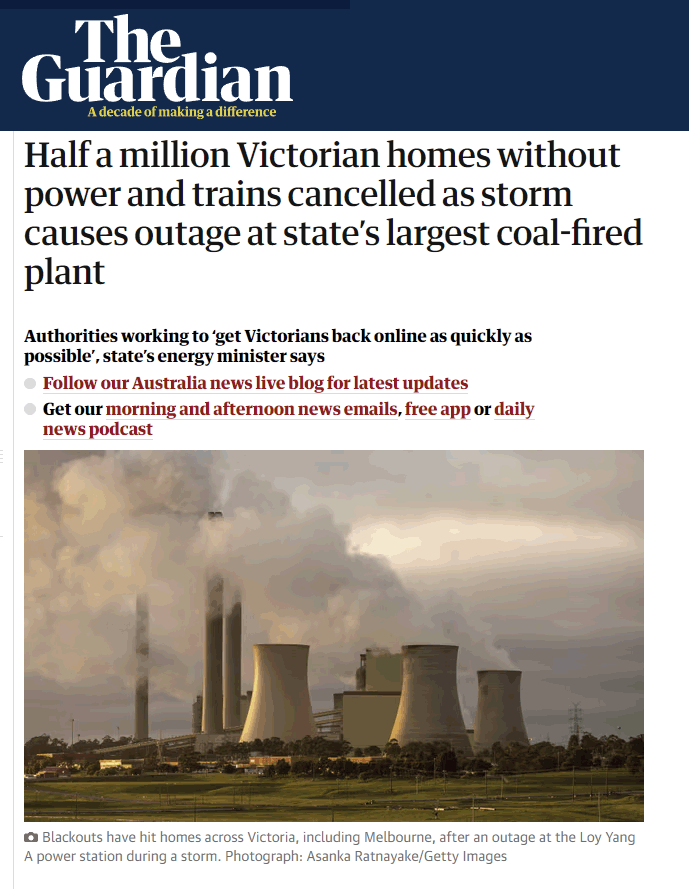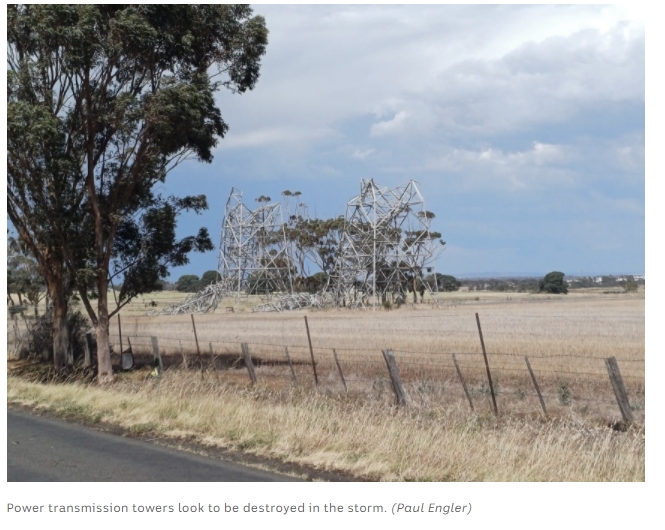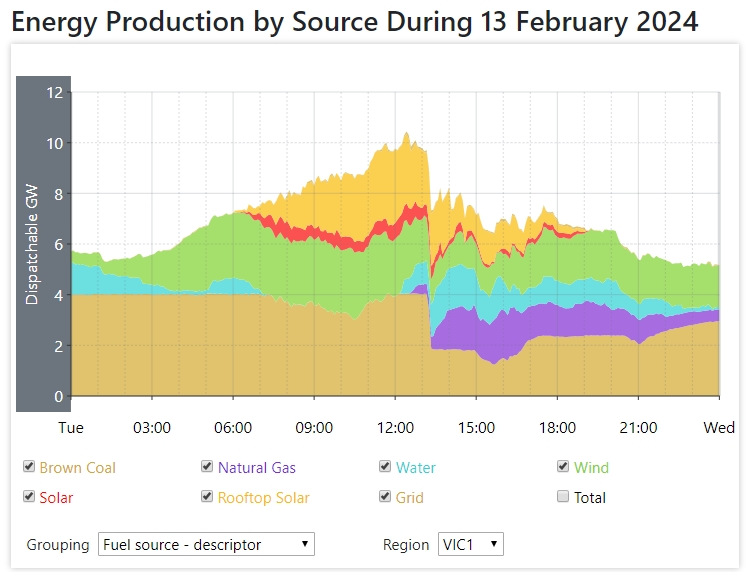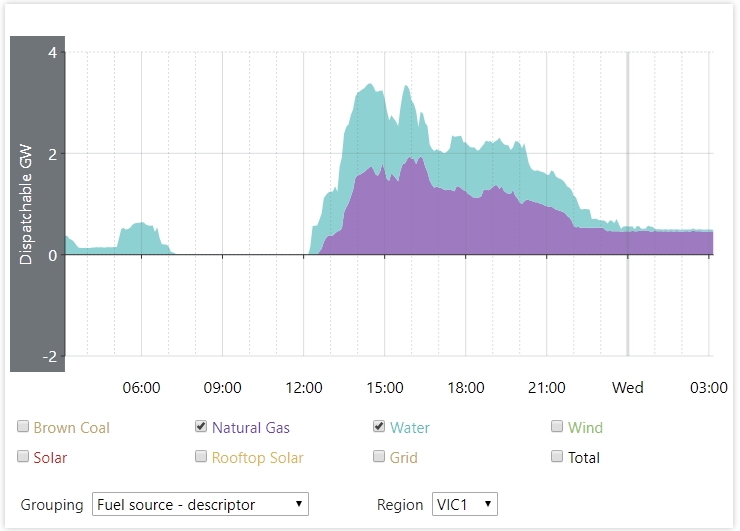By Jo Nova
Just how wise is it to have a grid dependent on all this fragile infrastructure?
Nature seems to be telling us something about adding another 10,000 kilometers of vulnerable transmission lines.
Yesterday six high voltage transmission lines collapsed in Victoria leaving half a million people without electricity for hours. But only a few weeks ago five towers collapsed in Western Australia putting 30,000 in the dark. And out in Kalgoorlie, when the gas backup plants failed, thousands of people went for days without power in 40 degree heat. Some people were unable to call triple zero, freezers full of food were spoilt and nearly everything left to buy had to be paid for in cash.
In Victoria the towers fell at 1:10pm during a storm. Their loss triggered the shut down of 4 large coal power units at Loy B Yang taking out 2 GW of generation. It took three hours to get one turbine back on line, and eight hours to restore the second. Everyone is talking about “the coal fired outage” but about half the wind power running at the time was also lost, and over the next hour, more than half the grid scale solar power also disappeared.
It was a shock to the system for a state with nearly 7 million people:
Graph from Anero.id Enery (Feb 13)
The sudden simultaneous drops for wind power and coal power suggests they were both affected by the transmission line failures. Brown coal generation fell almost instantly from 4GW to 2GW, but wind power in the state fell from 1.8GW to 1GW sharply.
Graph from Anero.id Enery (Feb 13)
Solar and wind power just made the storm damage worse:
The renewable cheer squad is calling for “a faster transition” to somehow solve these blackouts but both solar and wind power need thousands of miles of the very same collapsible transmission lines, putting the grid at even more risk of sudden breaks.
Indeed wind power fell right when we needed it. We can’t confirm yet how much of that was due to the towers collapsing, or whether it was because plants were shutting off in turbulent conditions.
Grid scale solar certainly didn’t save the day even though it was the middle of the day. Perhaps the solar plants were cut off, or perhaps the clouds rolled over? Solar “farm” production was reduced from 500MW to 200MW through most of the afternoon. And while rooftop solar suffered smaller losses, by 2pm it lost about 1 GW of generation too. About the nicest thing we can say about solar power is that it won’t destabilize the grid if storms arrive at night.
The things that did save the day were gas and hydro power (see below), but if Hazelwood coal power was still running, it would have helped too. Luckily, there is no drought on the East Coast at the moment. In a normal El Nino year, the hydro might not have been there…
Graph from Anero.id Enery
The Victorian Energy Minister blames the weather and doesn’t seem to realize some forms of generation need a thousand more miles of power lines:
But Victorian Energy Minister Lily D’Ambrosio said that if “catastrophic extreme weather” physically took out power lines, “then no matter what you do in terms of electricity generation or other technologies, that will cause outages”.
But if all of the state ran on coal fired power or gas, less of the state would have blacked out.
Grids with lots of transmission lines are vulnerable grids
The Guardian, masters of misinformation, told us that the coal fired plants were affected by the storms, just in case you thought they might be stronger than flimsy windmills and giant sheets of glass panels.
 The Guardian didn’t mention the 2GW drop in wind power and solar output. They happen every day of course…
The Guardian didn’t mention the 2GW drop in wind power and solar output. They happen every day of course…
Further information is available from WattClarity — like grid inertia, and the frequency volatility.



